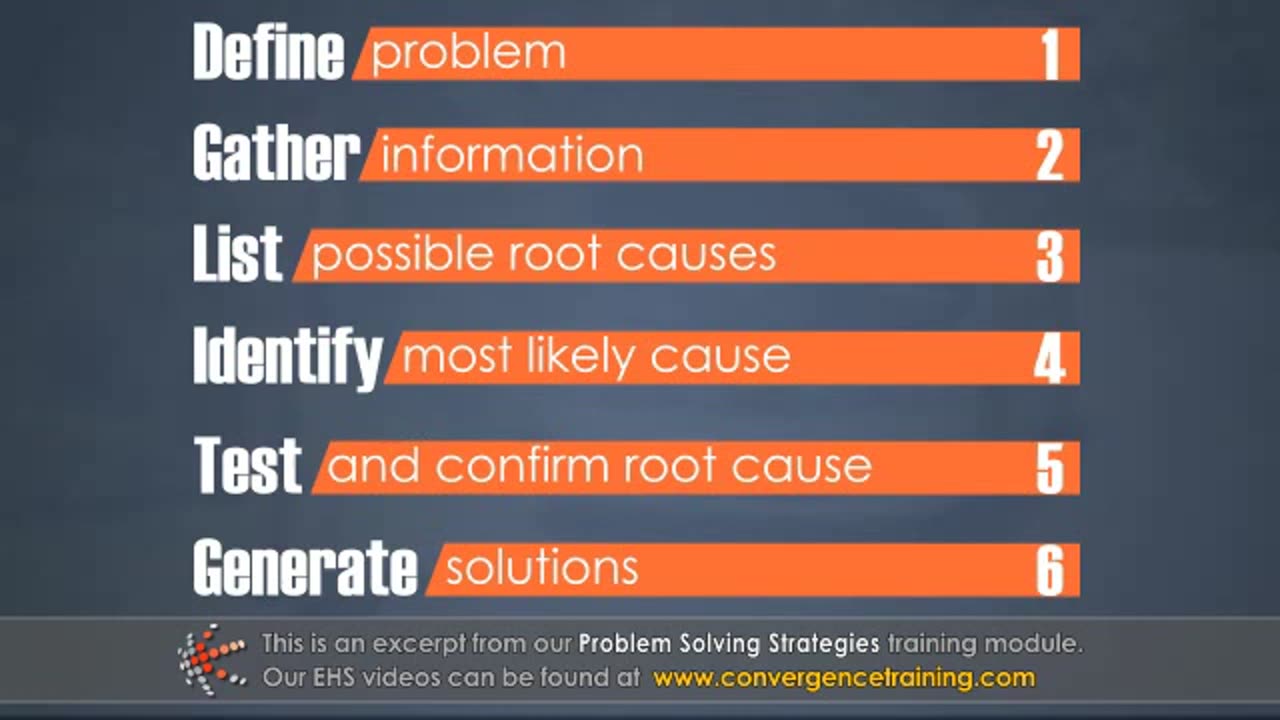Premium Only Content

Problem Solving Strategies_2
Here are additional **problem-solving strategies** to complement earlier approaches, focusing on structured, creative, and analytical techniques:
---
### **1. Cause-and-Effect Analysis**
- **Fishbone Diagram (Ishikawa):** Visualize root causes by categorizing them into areas such as Materials, Methods, Machines, People, Environment, and Measurement.
- **5 Whys Technique:** Keep asking "Why?" until you reach the root cause of the problem.
---
### **2. Brainstorming and Ideation**
- **Divergent Thinking:** Generate as many ideas as possible without judgment.
- **Mind Mapping:** Organize ideas visually to explore relationships and new angles.
- **SCAMPER Technique:** Modify an existing solution by **Substituting, Combining, Adapting, Modifying, Putting to other use, Eliminating, or Reversing**.
---
### **3. Pareto Analysis (80/20 Rule)**
- Focus on identifying the 20% of causes that create 80% of the problem's impact.
- Use this analysis to prioritize solutions with the most significant effect.
---
### **4. Systems Thinking**
- Understand the problem within the context of its larger system.
- Identify feedback loops and interactions between components that might affect outcomes.
---
### **5. Decision Matrix (Weighted Scoring)**
- List possible solutions and criteria for evaluation.
- Assign weights to criteria based on importance, and score each solution to choose the most viable option.
---
### **6. SWOT Analysis**
- Evaluate the **Strengths, Weaknesses, Opportunities, and Threats** related to the problem or solution to find a balanced approach.
---
### **7. Simulation and Modeling**
- Use tools like flowcharts, computer models, or simulations to predict outcomes of different solutions.
- Test various scenarios to find the optimal approach.
---
### **8. PDCA Cycle (Plan-Do-Check-Act)**
- **Plan:** Define the problem and propose a solution.
- **Do:** Implement a small-scale solution.
- **Check:** Evaluate results to confirm effectiveness.
- **Act:** Adopt, modify, or discard the solution based on findings.
---
### **9. Collaborative Problem Solving**
- Involve diverse teams to bring multiple perspectives.
- Use structured workshops or problem-solving frameworks like Design Thinking.
---
### **10. Reverse Engineering**
- Start with the desired outcome and work backward to identify steps and requirements for success.
---
### **11. Scenario Analysis**
- Explore "what-if" scenarios to anticipate risks and plan mitigation strategies.
---
### **12. Use Technology and Tools**
- Employ software for project management, root cause analysis, or process simulation to enhance efficiency and accuracy.
---
### **13. Experimentation and Iteration**
- Use trial-and-error approaches with controlled experiments to refine solutions progressively.
---
By combining these strategies with sound judgment and a systematic approach, you can address complex problems effectively and sustainably.
-
 1:35
1:35
HSESafetyInformation
4 months agoMutton Chops two ways- baked & grilled Recipe by Food Fusion (Eid Recipe)
64 -
 LIVE
LIVE
DynastyXL
3 hours ago🧟 Day 4 Base Relocate With MrsDynasty 🧟 Building a community first 100 Followers! (54/100) 💯
49 watching -
 16:58
16:58
Ohio State Football and Recruiting at Buckeye Huddle
20 hours agoOhio State Basketball: Can the Buckeyes Improve in Year 2 of Jake Diebler Era?
12.7K3 -
 2:20:02
2:20:02
Side Scrollers Podcast
21 hours agoSMASH BROS SCANDAL, DISNEY PREDATOR COULD GET JAIL, MINDSEYE GUTTED | Side Scrollers Live
18.9K9 -
 38:27
38:27
Degenerate Plays
13 hours ago $1.09 earnedI Never Noticed This Kevin Conroy Batman Detail Until Now! - Batman: Arkham Asylum : Part 6
11K -
 17:52
17:52
Tactical Considerations
20 hours ago $0.98 earnedGlock 43X Radian Ramjet Afterburner & Magwell Ultimate EDC!
11.4K2 -
 LIVE
LIVE
Midnight In The Mountains
2 hours agoMorning Coffee w/ Midnight | Finally Back to "Conspiracy" News! |
133 watching -
 LIVE
LIVE
DoldrumDan
1 hour agoNIGHTREIGN NEW BOSS TODAY - LAST DAY TO BEAT JAW - CHALLENGE RUN - ELDEN RING - DAY 11
72 watching -
 30:54
30:54
Anthony Pompliano
18 hours ago $0.59 earnedHow Geopolitics Are Making Bitcoin Stronger
13.9K -
 3:30:49
3:30:49
tacetmort3m
5 hours ago🔴 LIVE - AVERAGE DAY IN ONLYSANDS - DUNE AWAKENING DAY 13
8.43K1